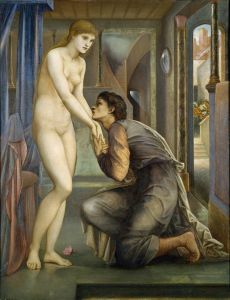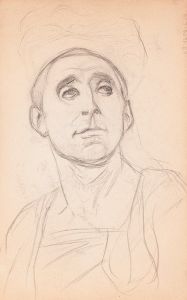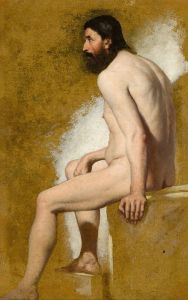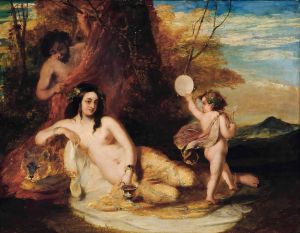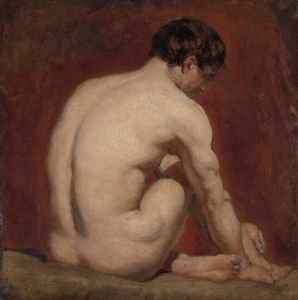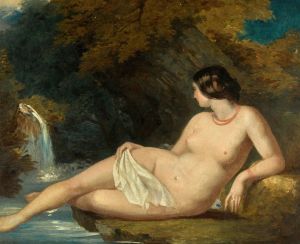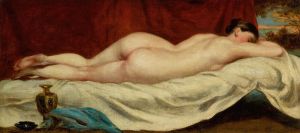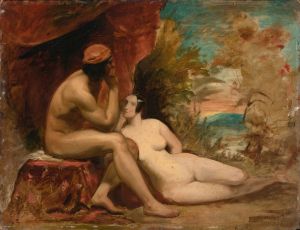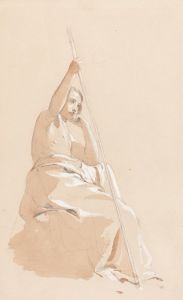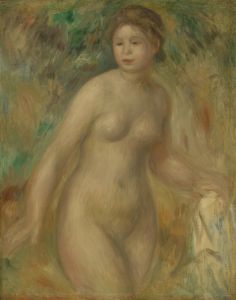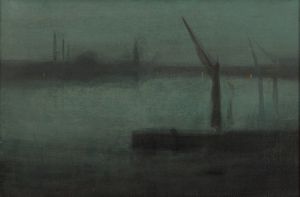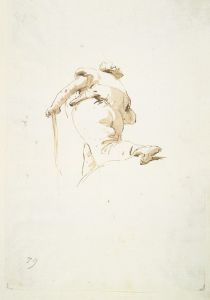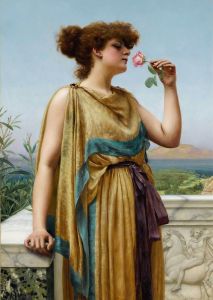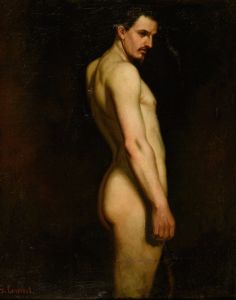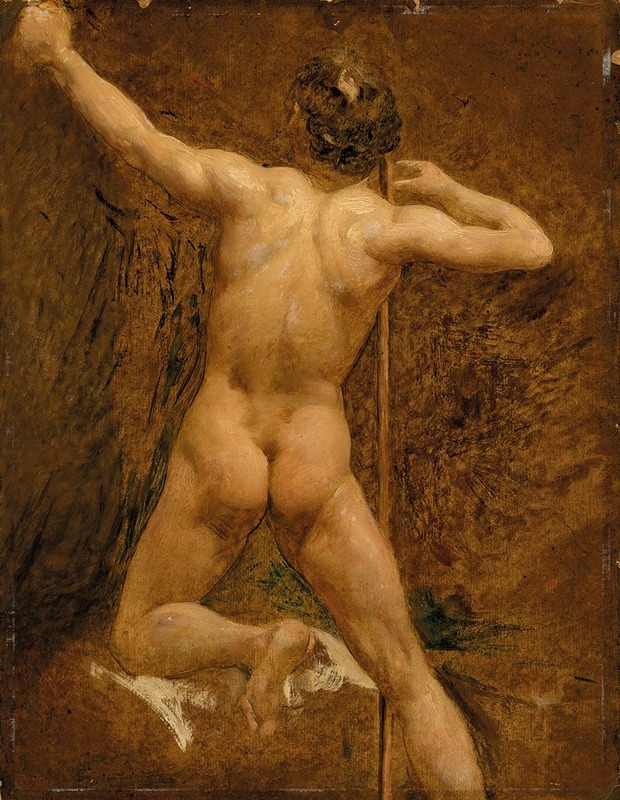
Male nude
A hand-painted replica of William Etty’s masterpiece Male nude, meticulously crafted by professional artists to capture the true essence of the original. Each piece is created with museum-quality canvas and rare mineral pigments, carefully painted by experienced artists with delicate brushstrokes and rich, layered colors to perfectly recreate the texture of the original artwork. Unlike machine-printed reproductions, this hand-painted version brings the painting to life, infused with the artist’s emotions and skill in every stroke. Whether for personal collection or home decoration, it instantly elevates the artistic atmosphere of any space.
William Etty was a notable English artist of the 19th century, renowned for his depictions of the human form, particularly the nude. His work "Male Nude" exemplifies his skill in capturing the human anatomy with a focus on realism and classical beauty. Etty was born in 1787 in York, England, and his passion for art led him to study at the Royal Academy of Arts in London. He was heavily influenced by the Old Masters, particularly the works of Titian and Rubens, which is evident in his use of color and composition.
"Male Nude" is a testament to Etty's dedication to the study of the human body. During his time, the depiction of the nude was a subject of controversy, often criticized for being indecent. However, Etty defended his work by emphasizing the importance of the nude in art history and its role in understanding human beauty and form. His approach was academic, focusing on the anatomical accuracy and the play of light and shadow on the skin.
Etty's "Male Nude" is characterized by its attention to detail and the lifelike representation of the subject. The painting showcases his ability to render the texture of skin and the subtle shifts in tone that define muscle and bone structure. Etty often worked from live models, which was a common practice for artists seeking to achieve a high level of realism. This dedication to working from life allowed him to capture the nuances of the human form with great precision.
The composition of "Male Nude" reflects Etty's classical influences, with the figure often posed in a manner reminiscent of ancient Greek and Roman sculptures. This connection to classical art was a deliberate choice, as Etty sought to elevate the status of the nude in contemporary art by linking it to the revered traditions of the past. His work was part of a broader movement in 19th-century art that sought to revive classical ideals and integrate them into modern artistic practices.
Despite the initial criticism, Etty's work gained recognition and respect over time. He became a full member of the Royal Academy in 1828, a testament to his skill and the impact of his work on the art community. "Male Nude," like many of his other works, contributed to the ongoing dialogue about the role of the nude in art and its place in society.
Etty's legacy is marked by his commitment to the human form and his ability to convey its beauty through paint. His works continue to be studied and appreciated for their technical mastery and their role in challenging the artistic norms of his time. "Male Nude" remains an important piece within his oeuvre, reflecting both his artistic skill and his dedication to the portrayal of the human body in art.





